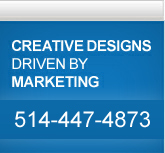|
A
| B | C
| D | E
| F | G
| H | I
| J | K
| L | M
| N | O
| P | Q | R
| S | T
| U | V
| W | X
| Y | Z
T
Tabloid: A paper sized at
11x17 inches. Also refers to a print size slightly smaller
than a traditional newsletter.
Target object: The object you perform a shaping
action on, such as welding, trimming, or intersecting with
another object. The target object retains its fill and outline
attributes while copying these attributes to the source
objects used to perform the action. See also source object.
Template: A predefined set of information
that sets the page size, orientation, ruler position, and
grid and guideline information. A template may also include
graphics and
text that can be modified.
Text: The body copy in a publication, or
on a website.
Thermography: A printing process whereby
slow drying ink is applied to paper and, while the ink is
still wet, is lightly dusted with a resinous powder. The
paper then passes through a heat chamber where the powder
melts and fuses with the ink to produce a
raised surface.
Threshold: A level of tolerance for tonal
variation in a bitmapped image. For example, when you convert
an image to the Black-and-White color mode, the threshold
you set determines how many tonal values are converted to
black and how many to white.
Thumbnail: A small rough layout that shows
concept development.
Ticket envelope: Envelopes used mostly
for theater tickets, with no other particular usage.
Tint:
A halftone screen that contains all the same sized dots.
Tone: The variations in a color or the
range of grays between black and white
Tiling:
The technique of repeating a small image across a large
surface. Tiling is often used to create a patterned background
for World Wide Web pages.
Tooth: The rough surfaced finish of papers
such as vellum or antique.
Tracking: The average space between characters
in a block of text. Sometimes also referred to as letterspacing.
Trademark Art: A design that stands as
a symbol for a product or company. (See Logo Design.)
Transparent: The ability to see through
an item. The opposite of transparent is opaque. Setting
lower levels of transparency causes higher levels of opacity
and less visibility of the underlying items or image.
See also opaque.
Trapping: The process of printing wet ink
over printed ink, which may be wet or dry.
Trim marks: Marks placed on the sheet to
indicate where to cut the page.
TrueType
fonts: The fonts that print as vectors or bitmaps,
depending on the capabilities of your printer. TrueType
fonts print the way they appear on the screen and can be
resized to any height.
Two-point
perspective: An effect created by lengthening or
shortening two sides of an object to create the impression
that the object is receding from view in two directions
Type 1: The international type standard
for digital type, available on almost every computer platform.
Originally invented by Adobe Systems, Type 1 is now the
most commonly available digital type format and is used
by professional digital graphic designers. More than 30,000
fonts are available in the Type 1 format.
Typeface: The letters, numbers, and symbols
that make up a design of type. A typeface is often part
of a type family of coordinated designs. The individual
typefaces are named after the family and are also specified
with a designation, such as italic, bold or condensed.
Typeface family: Also known as family.
The collection of faces that were designed together and
intended to be used together. For example, the Garamond
font family consists of roman and italic styles, as well
as regular, semibold, and bold weights. Each of the style
and weight combinations is called a face.
Typestyle: A style of type including italic,
medium, or bold.
Typographic color: The apparent blackness
of a block of text. Color is a function of the relative
thickness of the strokes that make up the characters in
a font, as well as the width, point size, and leading used
for setting the text block.
|
